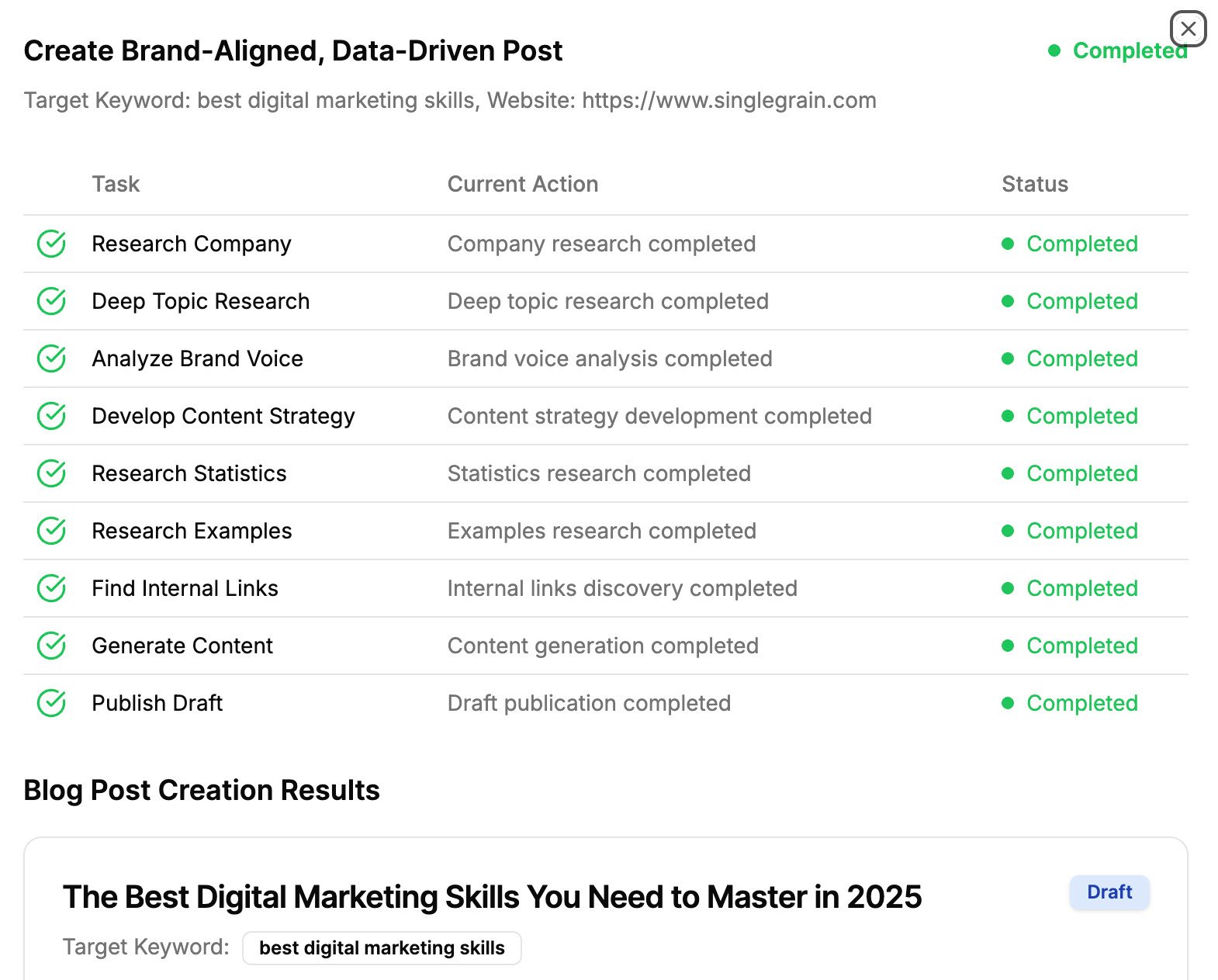Once upon a time (1898, to be exact) in an ad agency in Philadelphia, an impressively mustachioed ad man named Elias St. Elmo Lewis pioneered the modern-day marketing funnel.
The concept itself was quite straightforward: in order to make a sale, you must first gain the customer’s attention, then their interest, and finally, their desire. This would eventually go on to be known as the AIDA funnel, and over the next hundred years or so, it evolved to become the backbone of virtually every organization’s sales strategy:
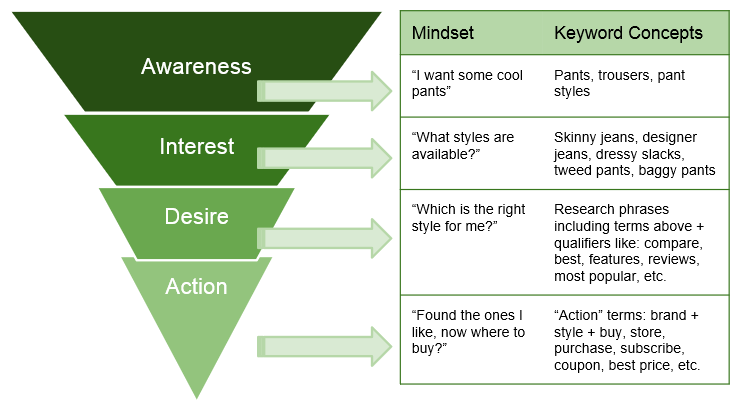
But what if we’ve been wrong the entire time?
What if – and bear with me here – not only have we been wrong, but we’ve been looking at the whole marketing process in reverse?
This is precisely the central thesis behind the growing popularity of Account Based Marketing (ABM) among B2B businesses, and of 75% B2B marketers reported that ABM Marketing (also called “signal-based selling“) helped them identify and connect with the right buyers earlier in their purchasing journey.
But what is ABM marketing exactly? Does it even work? And what does it mean for your business?
These are just a few of the question that we’ll be answering in our Account Based Marketing Mega Guide.
TABLE OF CONTENTS:
What Is Account Based Marketing?
When you take a look at the traditional marketing funnel, the key to winning at sales is readily apparent. In order to generate as much revenue as possible, the goal is to fill your funnel with as many new leads and prospects as possible. Account Based Marketing (ABM) is all about flipping this funnel on its head.
Instead of treating marketing and sales as a numbers game and casting as wide a net as possible, the aim is to focus on a small handful of prospects and to tailor your marketing to the individual.
The ABM marketing funnel follows these basic steps:
- Identify. Get as specific as possible, and only target leads and prospects that you know are interested in what you have to offer. According to a recent DemandGen report, in order to adopt a truly focused approach, 18% of businesses target less than 50 accounts, 19% target a wide range of accounts (between 1,000-5,000), and the majority of businesses (42%) target anywhere from 50-500 accounts.
- Personalize. Once you’ve identified your prospect, it’s time to personalize your marketing approach to the individual as much as possible. A survey by CEB found that consumers were 40% more likely to become a customer if they perceive that the content was tailored to their specific needs.
- Engage. After thoroughly conducting your research and collating suitable marketing materials and content, get in contact and develop a relationship with your chosen prospect. A study by SiriusDecisions found that 30% of marketers who employed an ABM approach generated a 100% increase in engagement with C-level prospects.
- Advocate. After building a relationship with the prospect – regardless of whether they become a customer or not – take advantage of referral marketing, and ask them to introduce new leads into your pipeline. 84% of marketers state that using ABM provides significant benefits to retain and expand existing client relationships.
The end result is that you have a funnel that looks more like this:

Learn More:
- 4 Ways to Use Automation with Account Based Marketing for Better Lead Nurturing
- How to Guide Your Customers Through the Marketing Funnel with Interactive Content
- How to Choose the Right Content for Each Stage of the Marketing Funnel
- How to Create a Marketing Funnel that Generates Sales (Templates Included)
Key Takeaway:
Is This the Right Approach for My Business?
It’s easy to get swept up in impressive statistics, like the fact that 97% of marketers claim that ABM produces a higher ROI in comparison to other marketing strategies.

Or that organizations that use ABM generate up to 27% more sales revenue, have a 42% higher conversion rate and produce up to 36% more overall profit:
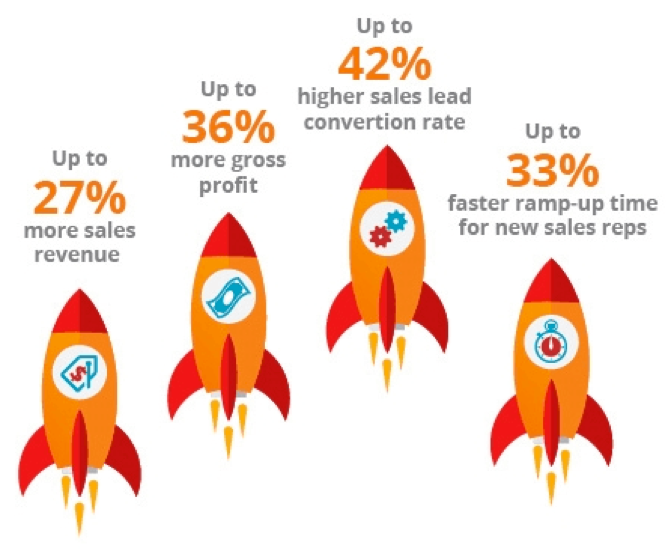
It’s important to remember that not every business is equipped to handle an ABM approach to marketing. Here are the five questions to consider when deciding if ABM is right for you:
- Do I have the right people? The first thing to keep in mind is that ABM is a team-based approach to marketing, so you can’t just hand this off to a single salesperson and expect it work. What makes ABM so powerful is that it aligns sales and marketing teams and enables them to work together better. So before you start, make sure you have the right people and the right training in place to execute your ABM campaign.
- Do I have the right ABM tools? While it’s not necessary to have a full tech stack to run a successful ABM campaign, it certainly does help. The last thing you want is to be drowning in a pile of spreadsheets and spending the majority of your time hunting down the right piece of information. Making sure you have things like the right CRM, a healthy prospect database, and access to the correct data will go a long way towards executing a successful ABM campaign:
- Does my team communicate easily? As mentioned previously, ABM is a team-based approach. What this means is that it is absolutely necessary to have channels through which your team can communicate easily and effectively. One of the fastest ways for an ABM campaign to go wrong is a breakdown in communication. Consider exploring how to run weekly growth meetings and different ways to improve communication within the team.
- Can I adopt a target-based approach? Take a moment to consider what your business model is like, and if you would truly benefit from targeting a smaller number of prospects. Also, consider factors such as whether or not you have the specific kind of content your prospect wants, and if you can handle the increased engagement that ABM will bring.
- Do I have the right data? As I’m sure you’ve realized by now, ABM requires the juggling of a variety of different moving parts. The more complex something is, the more reliable your data needs to be in order to reduce the risk of mistakes, confusion and miscommunication. Perform a careful audit on the overall health of your marketing data and survey your salespeople and marketers and see what they think.
Key Takeaway:
How to Implement ABM into Your Business
Now that we’ve gone over the foundation of what an ABM funnel looks like, and you know that it’s the right fit for your organization, let’s get into how you can implement ABM into your business.
Step 1 – Align the Troops
Much like how any well-baked cake is the sum of all of its various ingredients working together harmoniously, the same can be said for the execution of any successful ABM strategy.
Unlike traditional marketing funnels where one salesperson is tasked with handling multiple accounts, the ABM strategy works best when you have multiple people working together on a single account. Organizations that aligned their sales and marketing teams experienced 32% higher revenue growth, whereas less aligned companies saw a 7% decline in revenue.

Source: Harvard Business Review
Traditionally, the weakest point of any sales cycle is the hand-off point between marketing and sales. Oftentimes salespeople feel that marketers are giving them unqualified leads, whereas marketers feel that the sales team isn’t doing enough to follow up with the leads they provide.
As Chief Marketing Officer of Phizzle Pallavi Sharma said:
“The worst possible scenario is when marketing develops a strategy without sales involvement. Or if sales marches to its own beat without taking the time to understand their own marketing and rational behind it.”
Break down your customer journey, and find out where sales and marketing overlap to see if there are any ways you can reduce friction and potential confusion between the two. You can further align your sales and marketing teams by ensuring that both departments are speaking the same language, have the same goals, and share the same metrics.
Learn More:
- 9 Proven E-mail Templates to Add to Your Conversion Funnel
- 5 Case Studies of Successful Marketing Funnels
- Tools to Optimize Your Marketing Funnels and Generate Massive ROI
- 3 Ways to Personalize the Customer Journey Experience
Step 2 – Identify Your Ideal Customer(s)
Understanding who and what your ideal customer looks like is the cornerstone of the account based marketing approach. Remember that the goal is to be as specific as possible with your marketing.
The best way to start developing your buyer personas is to analyze your existing customer base. Create a shortlist of all the key demographics that your most successful customers share – everything from the basics like the size of the company and the industry they’re in, down to specific details like what their tech stack looks like.
Make sure to go beyond the demographics. Find out if your customers share any common pain points, look into what drives their purchasing decisions, and map out what your typical customer journey looks like. Consider interviewing or surveying your customers, as well as your frontline salespeople, to gain as much insight as possible. When the goal is to find as many commonalities and patterns as possible, you really can’t have too much data.
Once you’ve conducted your research and collected all your data, you’re ready to create a profile, or a buyer persona, for every one of your customer types:

Note: Keep in mind that you want to focus on the organization and not the individual decision-maker (we’ll get to that part later).
Now that you’ve identified what your ideal customer looks like, you’ll have a much easier time building your prospect list and personalizing your overall marketing strategy.
Step 3 – Research and Qualify Your Prospects
With the team assembled and the goals in place, it’s time to start working on your overall marketing strategy. This begins with making sure that every account on your list is the right fit for your business. Even if a prospect looks good at first glance, an integral part of the ABM funnel is taking the time to qualify your prospects before you get in touch with them.
One very easy way to do this is to create a simple qualifications checklist, a short list of criteria to meet and questions to ask in order to help you determine the quality of a prospect.
The next step of your qualification process should be to identify who the key decision makers are within the organization. While salespeople are often trained to locate and engage with a single individual, the fact of the matter is that the larger the company is, the more people will have to be involved to sign off any deal.
According to the Harvard Business Review, it takes an average of 5.4 people to sign off each purchase:
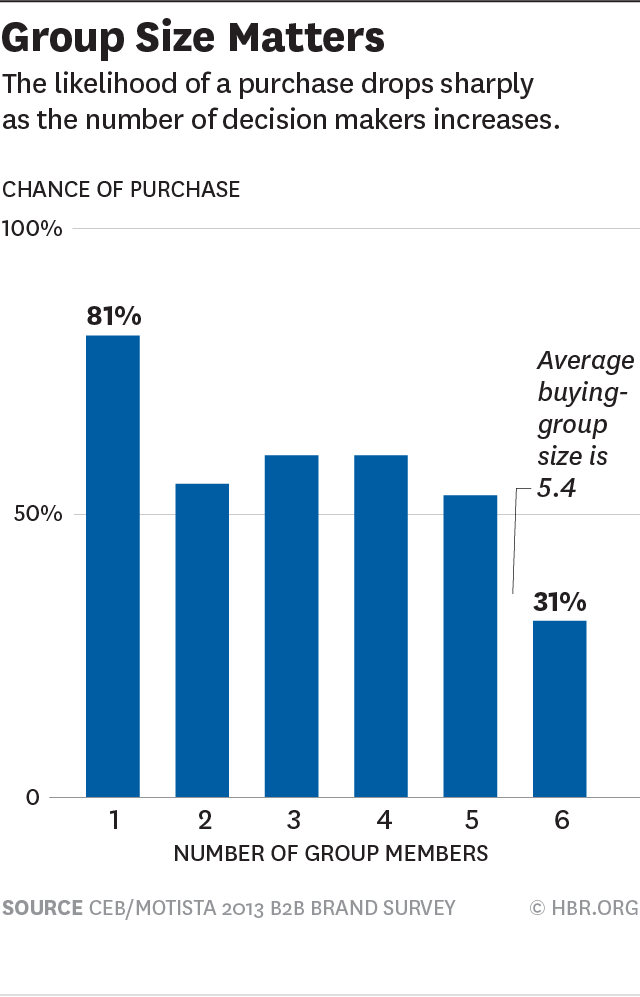
For example, when conducting your research you might have found out that you’ll need to speak with the CEO, the CMO, and the CTO before being able to close the deal. That means that you’ll need to prepare your marketing strategy to meet the unique challenges and needs of every key decision maker.
To that end, you ought to leverage technology to help you score and qualify your prospects. In Oracle’s case, they used a combination of tools like Everstring to help them monitor their target accounts and their overall quality.
This allowed the team at Oracle to focus more of their time on actually selling and developing relationships with prospects, as opposed to spending their time researching each prospect.
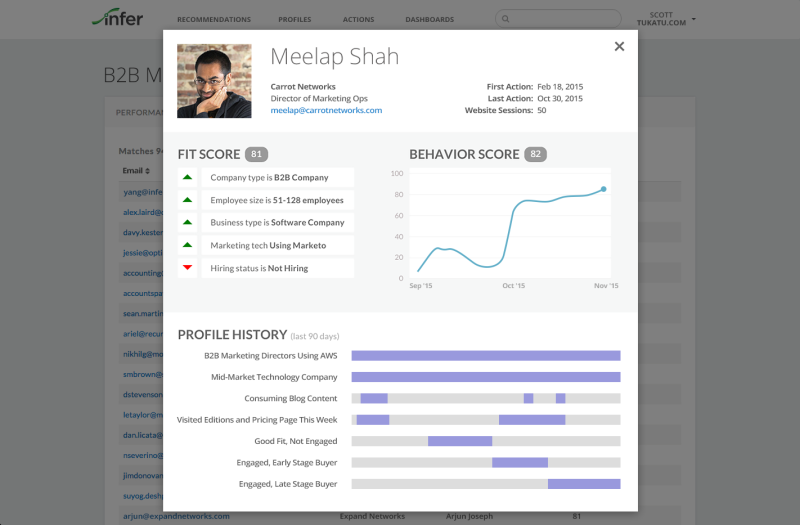
By incorporating predictive analytics into their ABM strategy, Oracle was able to improve their overall win rate for their flagship products by a whopping 300%.
Step 4 – Personalize Your Content
After researching and qualifying your prospect, you’ll be able to start crafting content tailored to their unique needs and challenges. According to DemandGen, 87% of buyers chose a vendor that “provided ample content to help them through each stage of the decision-making process.”
Ideally, you should have at least one piece of content for every stage of the customer journey.
While each organization has their own variation of what the customer journey looks like, to help you get started, we’re turning back to our good friend Elias St. Elmo Lewis. While the AIDA formula might be outdated, it does provide a good template to help you understand the traditional thought process behind a purchasing decision:
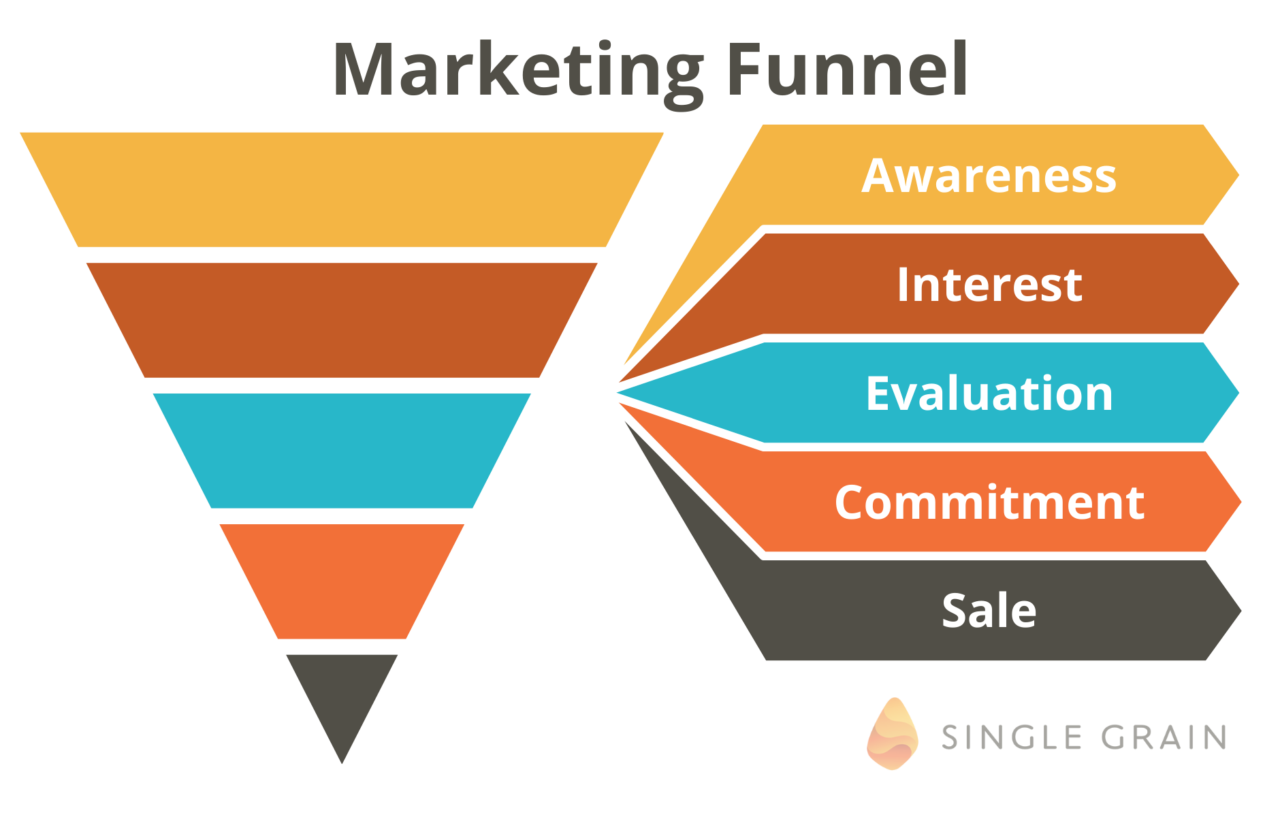
Another way to map out your customer journey is to to do away with the top-down model entirely and, quite literally, flip the funnel on its side.
In the following example, you can see how Terminus has broken down their customer journey with each stage representing a crucial step in the buyer’s thought process:
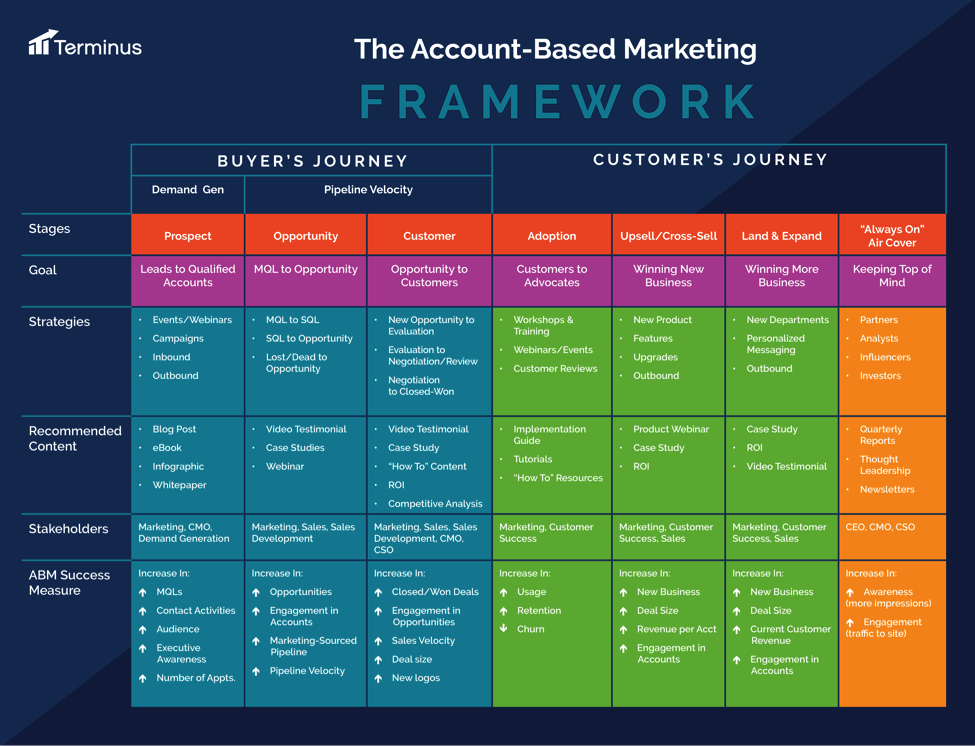
Notice how each stage clearly defines what the buyer is looking to achieve, what their needs are, and what kind of content the seller should use in order to move the buyer into the next stage.
Step 5 – Executing Your ABM Campaign
Now that you have all the right pieces in place, it’s time to engage your prospects.
The important thing to remember is that there is no one-size-fits-all approach when it comes to connecting with your prospects. Some will appreciate more traditional tactics such as cold calling and direct mail, whereas others may respond better to interaction through social media.
If you’ve done your research properly, you should have already determined which tactic your ideal customers will respond to best. Here are a couple of examples of how different companies execute their ABM campaigns.
1) Demandbase Uses Intent Data to Drive Engagement
Demandbase leverages its robust intent data capabilities to connect with high-value prospects at the right time. Their platform enables marketers to identify when accounts show interest in specific topics or solutions, providing a strategic advantage for targeting.
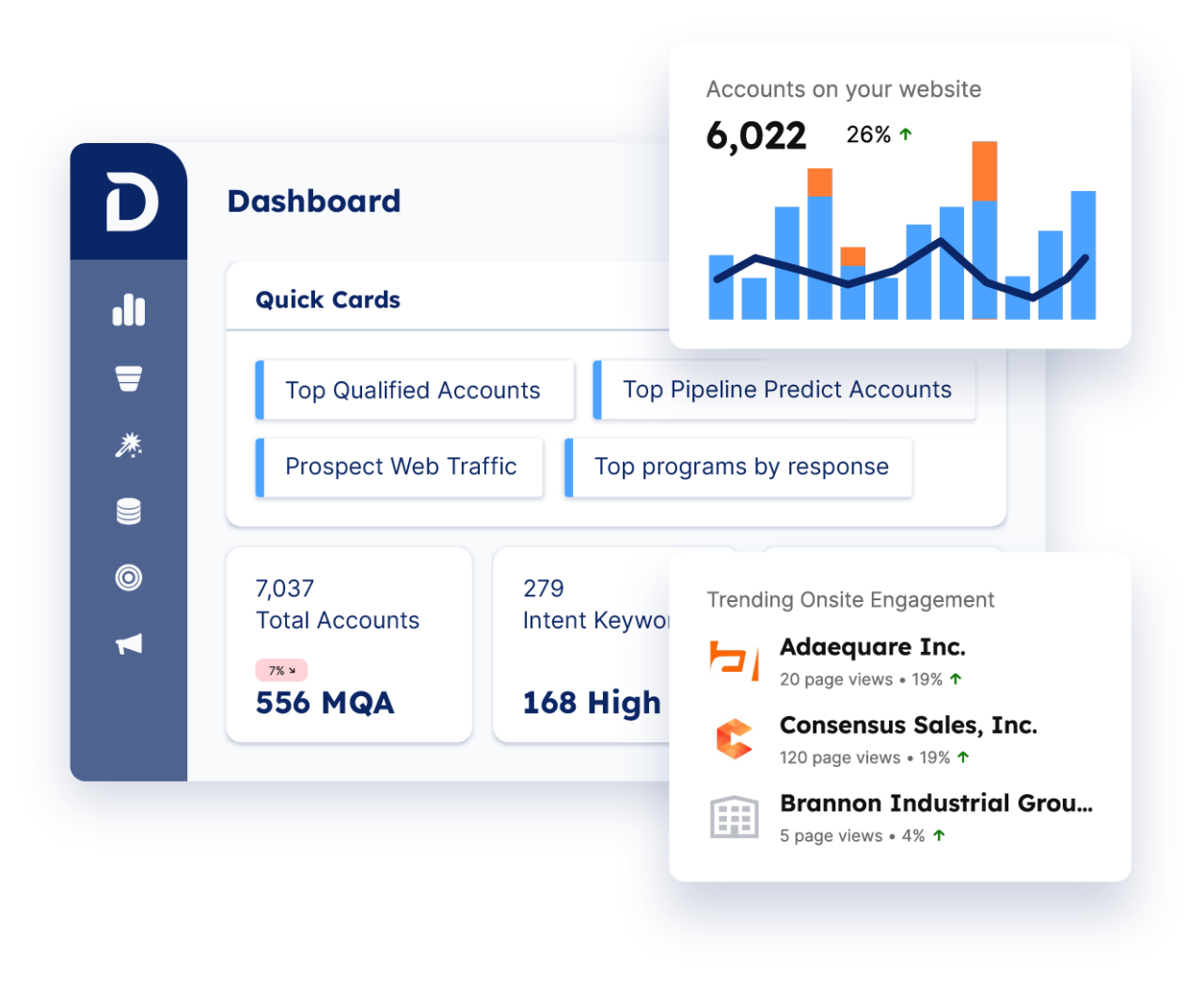
Source: Demandbase
For example, during one of their ABM campaigns, Demandbase used intent signals to craft personalized outreach strategies for each account:
- Tailored Content: Once intent data revealed a prospect’s interests, Demandbase sent personalized content aligned with those topics, such as whitepapers or case studies.
- Targeted Ads: These same accounts were served targeted ads across multiple channels, reinforcing their messaging.
- Strategic Follow-Ups: Sales reps used the data to time their follow-ups, ensuring their outreach was timely and relevant.
Demandbase marked significant success in its account based marketing (ABM) initiatives. For instance, SAP Concur (butilizing Demandbase’s platform) reported a 52% increase in revenue, a 57% rise in deal size, and a 59% growth in pipeline after consistently advertising to a prioritized group of accounts over three to four months.
2) 6sense Leverages Predictive Analytics for Better Targeting
6sense stands out in the ABM space by incorporating predictive analytics into their campaigns to uncover hidden demand and improve targeting precision. Using their AI-powered platform, they identify high-intent accounts and deliver hyper-personalized experiences.

Source: 6sense
One notable campaign involved a multi-step approach:
- Account Prioritization: 6sense identified accounts most likely to convert using AI predictions based on historical behavior and current buying signals.
- Customized Content Journeys: Prospects from these high-priority accounts received tailored content such as videos, blogs, and product guides through email and web personalization.
- Cross-Channel Synchronization: Ads, emails, and social media posts were synchronized to present a unified message, ensuring consistent engagement across platforms.
Additionally, the 6sense team implemented a proactive re-engagement strategy:
If a prospect disengaged, 6sense triggered automated workflows that sent new, relevant content to reignite interest.
This innovative approach resulted in a 42% increase in deal sizes and shortened the sales cycle significantly, proving the power of predictive analytics in ABM.
3) Terminus Takes Advantage of Events Marketing
For their own ABM campaigns, Terminus utilized traditional and digital methods such as cold calling, events marketing, and retargeting in order to connect with their prospects. As event marketing is a large part of their overall marketing strategy, Terminus creates events specifically for those on their targeted accounts list:

In order to ensure that their prospects are aware of the event, they target them with digital ads and content. Once the event is over, even if the prospect didn’t attend the event (but had shown interest in it), the team at Terminus would reach out to them through a mixture of cold calls and email marketing.
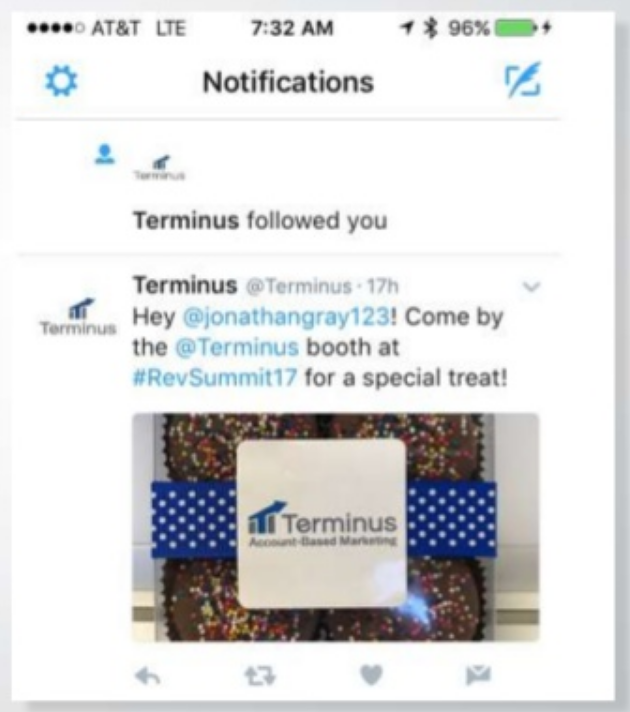
This simple approach allows Terminus to ensure that their prospects are aware of their brand and services before even contacting them, while also being able to establish their level of authority and expertise in advance. By using this mixture of tactics, Terminus was able to convert up to 27% of the accounts on their list within the year.
Learn More:
- Here’s How Targeting Cold, Warm & Hot Traffic Builds Successful Customer Relationships
- How to Use Personalization to Increase the Impact of Email Marketing
- How AI Helps Add Personalization to Your Email Campaigns
4) Rollworks Takes a Multi-Channel Approach
As I’m sure you’ve noticed by now, in order to run a successful ABM campaign, you need to connect and engage with prospects through more than one channel.
Realizing the same thing, RollWorks reached out to the targets of their ABM campaign through a mixture of personalized landing pages, retargeting and direct mail.
Their ABM campaign started off like any other traditional B2B sales strategy with sales reps connecting with key decision makers over email. So far, so standard.
Here’s where RollWorks began to introduce personalized content, though: when the prospect clicked on the link in the email, they were taken to a customized landing page that included a picture of the sales rep, and they would then be retargeted with ads that included the sales rep’s picture.
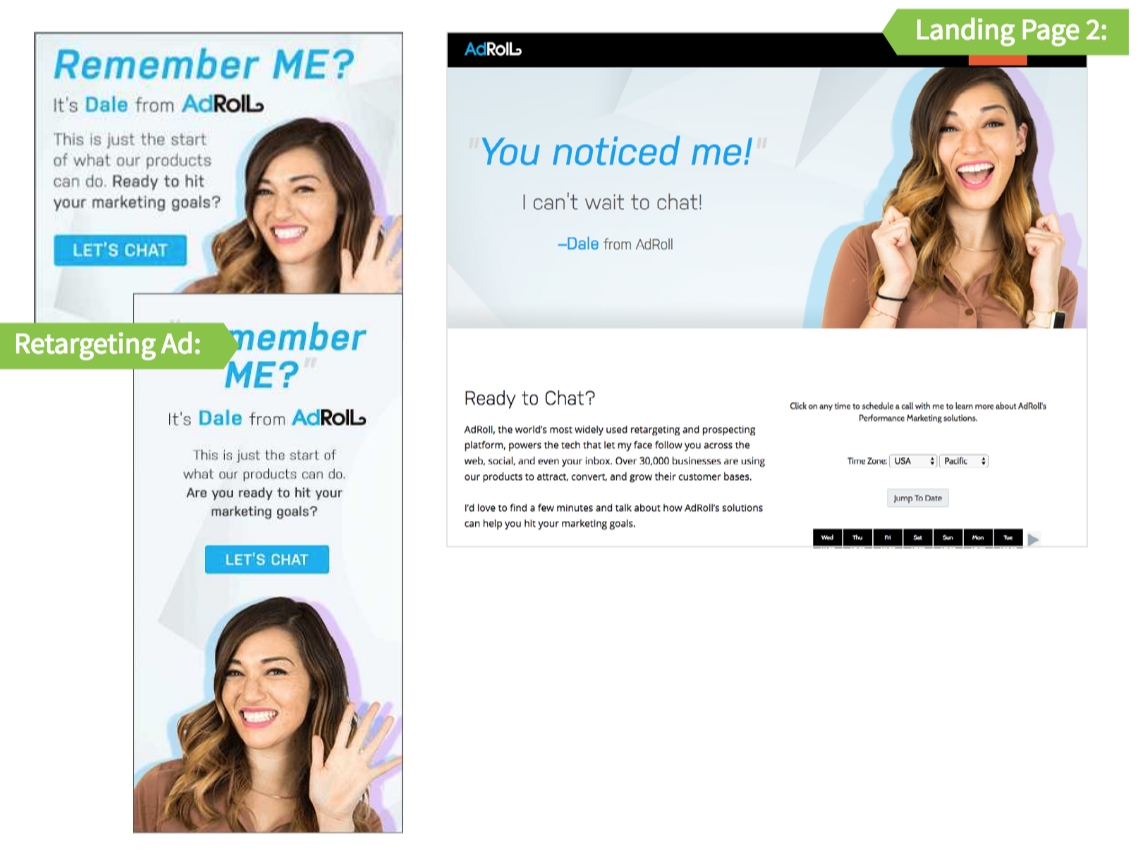
If the prospect didn’t end up taking action, or they stalled during the sales process for longer than 35 days, RollWorks would automatically mail them a physical kit to keep the momentum going. The kit included a branded notebook that contained a simple checklist on how to gain more customers, as well as multiple testimonials from successful customers.
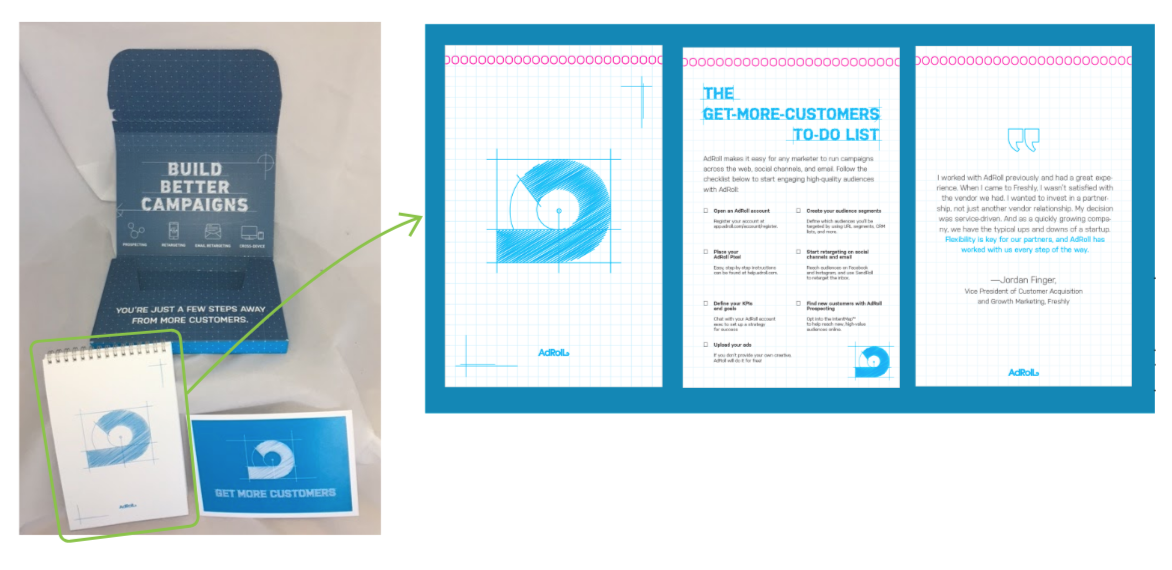
The end result for RollWorks was a conversion rate of 41% and increased brand awareness among their target audience from prospects sharing their marketing materials on social media.
Learn More:
- Buyer’s Journey 101: What Your Email Data Says About Your Customers
- 9 Ways to Deliver the Best Digital Experience to Your Customers
- 4 Bullet-Proof Ways to Increase Customer Retention (and Increase Sales!)
Step 6 – Review, Measure, Optimize, Repeat Ad Infinitum
Just like with anything else to do with business, when it comes to creating the perfect ABM strategy, it’s a game of constant evolution and re-iteration.
As powerful as ABM is, chances are that you’re not going to see any significant results right out the gate. It’s important to remember that building the right ABM strategy requires a lot of time, effort and patience. But when done right, it can produce amazing results and help you land bigger and more lucrative deals.
But since you can’t improve what you can’t measure, here are some key metrics to look out for when reviewing the success of your ABM strategy:
1) Win/Lose Rate
The most basic metric to start off with is to gain a rough idea of the effectiveness of your ABM campaign by checking your overall win/loss rate.
For the first few months or even the first year of your ABM campaign, make sure to regularly study the differences between your most successful customers and the ones that failed. Gain as many insights as you can as to why and how your ABM worked or, in some cases, didn’t work.
2) Pipeline Velocity
Understanding how long it takes you to move a lead to a sale is one of the core strengths of the ABM approach.
You can achieve this by mapping out every single touchpoint that a customer has with your brand and their accompanying metrics. Look into standard metrics like the open and clickthrough rates of emails and digital ads to figure out if there are any bottlenecks in your customer’s journey.
Study how fast it takes your average deal to move through your pipeline, and don’t be afraid to experiment with new ideas and tactics to shorten the overall sales cycle.
3) Customer Experience
Routinely gather feedback from your customers with one of these surveys:
Use these surveys at every stage of the customer journey to find out what their thoughts are, what pain points they might be facing, and the different ways that you can improve.
Key Takeaway:
Last Words on Our Account Based Marketing Guide
Improving the sales process starts with listening to your customers. The account based marketing process shifts focus toward quality connections with key decision-makers, establishing meaningful relationships.
This strategy transforms traditional sales methods, delivering targeted interactions that lead to stronger customer partnerships and measurable success. ABM is more than just a solitary tactic. It is an entire strategy bent on growing and sustaining business impact for the most profitable and potential prospects.
If you’re ready to level up your Account Based Marketing Strategy, Single Grain’s ABM experts can help!👇
Frequently Asked Questions on Account Based Marketing
-
How does ABM marketing differ from traditional marketing?
ABM focuses on identifying and targeting specific high-value accounts rather than casting a wide net to attract as many leads as possible. It emphasizes personalization and alignment between sales and marketing teams to create tailored campaigns for individual accounts.
-
Is ABM marketing suitable for small businesses?
ABM can work for small businesses if they have the resources and ability to focus on fewer, high-value prospects. Success often depends on the company’s ability to invest in personalized outreach and maintain close collaboration between teams.
-
How long does it take to see results from ABM marketing?
The timeline for seeing results varies, but ABM is typically a long-term strategy. Initial engagement and relationship-building can take months, but the deeper connections often lead to higher-value deals and long-term growth.
-
What tools are essential for implementing ABM marketing?
While you don’t need an extensive tech stack, tools like a CRM, marketing automation platforms, and analytics software can help streamline your campaigns. Intent data platforms, such as Demandbase or 6sense, are also highly effective for identifying high-value prospects.
-
How do I measure the success of an ABM campaign?
Success is measured using metrics like account engagement, deal size, pipeline velocity, and customer retention. Unlike traditional campaigns, the focus is on account-level results rather than individual lead generation.
-
What industries benefit most from ABM marketing?
ABM is especially effective in industries with long sales cycles and complex decision-making processes, such as technology, SaaS, and professional services. However, any business targeting high-value accounts can benefit from adopting an ABM strategy.
Related Video
For more insights and lessons about marketing, check out our Marketing School podcast on YouTube.
Additional contributions by Sam Pak.






